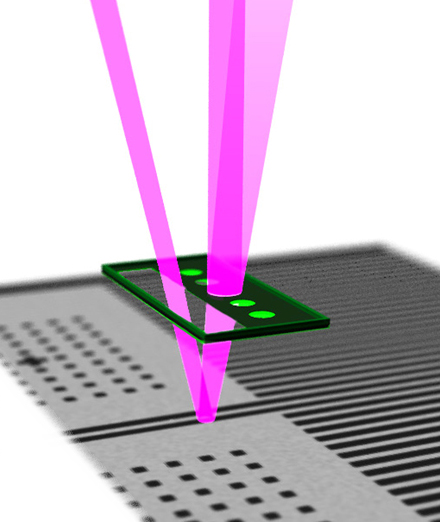Extreme-ultraviolet microscope to create next generation of microchips
November 2, 2011

The SHARP extreme-ultraviolet microscope will be used in creating the chips of the future (credit: Berkeley Lab)
An extreme-ultraviolet (EUV) microscope for creating the next generation of chips has been created by scientists at the U.S. Department of Energy’s Lawrence Berkeley National Laboratory (Berkeley Lab) in collaboration with leading semiconductor manufacturers.
Called SHARP (Semiconductor High-NA Actinic Reticle Review Project), the new microscope will be dedicated to photolithography, the central process in the creation of microchips.
Within the coming years, semiconductor devices will be measured in dimensions of down to 8 nanometers.To mass-produce them, industry is pushing a photolithography process that uses EUV light with a wavelength of just 13.5 nanometers, 40 times smaller than visible light.
“At this short wavelength, we can print and image circuit patterns at nanometer length scales,” says project leader Kenneth Goldberg of the Center for X-Ray Optics (CXRO) in Berkeley Lab’s Materials Science Division (MSD).